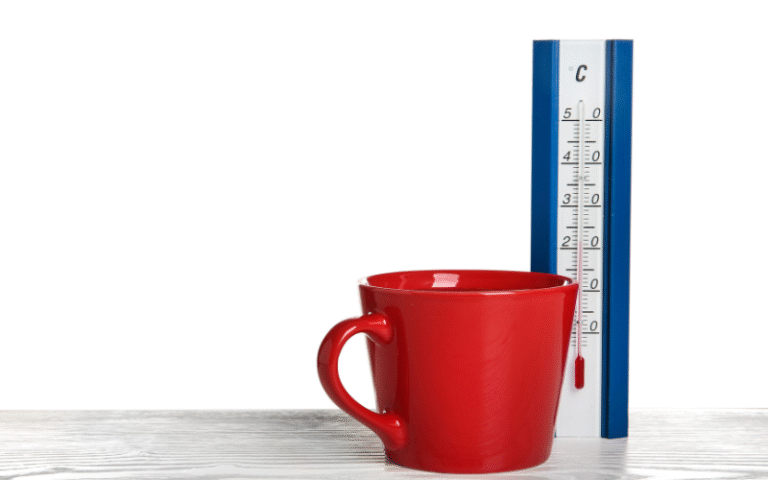How to Measure Flange Size: Accurate Sizing Guide
To measure flange size, use a tape measure to determine the outside diameter of the flange and count the number of bolt holes on the flange. This will give you the flange size and bolt circle diameter.
Flanges are commonly used in piping systems to connect pipes, valves, pumps, and other equipment. Accurate measurement of flange size is important to ensure proper fit and seal for effective operation of the system. Flange size can vary depending on the type of flange and its application.
There are several methods to measure flange size, including using a caliper, a ruler, or a flange size chart. With accurate measurement of flange size, you can select the appropriate gasket, bolts, and other components for your piping system.
Introduction To Flange Measurement
When working with pipes and fittings, it’s essential to accurately measure the flange size to ensure a proper fit and optimal performance. Understanding how to measure flange size is crucial for various industrial and plumbing applications. In this guide, we’ll explore the importance of accurate flange sizing and the common uses of flanges.
Importance Of Accurate Flange Sizing
Accurate flange sizing is crucial for ensuring a secure and leak-free connection between pipes and fittings. Proper measurements help prevent misalignment, which can lead to costly leaks and inefficiencies. It’s also essential for maintaining the structural integrity and safety of the overall system.
Common Uses Of Flanges
Flanges are commonly used in piping systems to facilitate easy assembly and disassembly. They provide convenient access for inspection, cleaning, and modifications. Additionally, flanges are utilized in industrial processes, such as petrochemical plants and refineries, where reliable connections are essential for safety and operational efficiency.
Essential Tools For Measuring Flanges
When it comes to measuring flanges, having the right tools is essential for accurate results. Two commonly used tools for this task are calipers and rulers/measuring tapes. Let’s take a closer look at each of these tools and how they can be used effectively.
Calipers And Their Use
Calipers are precision measuring instruments that can be used to measure the size of flanges with great accuracy. They consist of two arms, one fixed and one movable, which can be adjusted to fit around the flange.
Using calipers, start by placing the fixed arm against one side of the flange and gently adjust the movable arm until it touches the opposite side. Take note of the measurement displayed on the caliper’s scale. This measurement represents the size of the flange.
Calipers are available in different types, such as digital and dial calipers, each offering its own advantages. Digital calipers provide a clear digital readout, while dial calipers use a mechanical dial for measurement. Choose the type that suits your preference and the level of precision required for your flange measurements.
Rulers And Measuring Tapes
Rulers and measuring tapes are commonly used tools for measuring flanges, especially when a quick estimation of size is needed. These tools are simple to use and readily available in most workshops.
To measure a flange using a ruler or measuring tape, start by placing one end of the tool at the edge of the flange and extend it until it reaches the opposite edge. Take note of the measurement indicated on the ruler or measuring tape. This measurement provides an approximate size of the flange.
It’s important to ensure that the ruler or measuring tape is held straight and parallel to the flange edges for accurate measurements. If the flange has irregular shapes or protrusions, consider using a flexible measuring tape to wrap around the curves and obtain a more precise measurement.
Now that you know the essential tools for measuring flanges, you can confidently tackle this task with accuracy and precision. Whether you choose to use calipers or rulers/measuring tapes, having the right tool at hand will help you obtain reliable measurements for your flange size requirements.
Understanding Flange Types
Weld Neck Flanges
Weld Neck Flanges are designed for high-pressure applications, featuring a long neck for easy welding.
Slip-on Flanges
Slip-On Flanges slide over the pipe and are secured with fillet welds, suitable for low-pressure systems.
Blind Flanges
Blind Flanges are solid discs to block the end of a pipe, commonly used for pressure testing.

Credit: www.spectrababyusa.com
Steps To Measure A Flange Accurately
When it comes to measuring a flange accurately, there are a few key steps you need to follow. By taking these steps, you can ensure that you get the correct measurements for your flange, which is crucial for proper installation and compatibility. In this section, we will outline the necessary steps to measure a flange accurately.
Cleaning The Flange
Before you begin measuring the flange, it’s important to clean the surface thoroughly. Use a clean cloth or brush to remove any dirt, debris, or rust that may be present. This step ensures accurate measurements and prevents any interference during the measurement process.
Measuring Bolt Circle Diameter
The bolt circle diameter is an essential measurement when determining the size of a flange. To measure the bolt circle diameter, follow these steps:
- Locate the center of the flange and mark it using a marker or pencil.
- Measure the distance between the center point and the bolt holes, across the flange.
- Take note of the measurement and record it accurately.
Determining Flange Thickness
Flange thickness is another critical measurement that needs to be determined accurately. To measure the flange thickness, follow these steps:
- Place the flange on a flat surface, ensuring it is stable and not wobbling.
- Use a caliper or a measuring tape to measure the thickness of the flange at various points around the circumference.
- Take multiple measurements and calculate the average thickness for a more precise result.
By following these steps, you can measure a flange accurately and ensure compatibility with other components. Remember to clean the flange, measure the bolt circle diameter, and determine the flange thickness correctly. These measurements are crucial for selecting the right flange size and guaranteeing successful installation.
Calculating The Flange Diameter
To measure the flange size, start by calculating the flange diameter. Use a measuring tape to determine the distance across the outer edges of the flange. Ensure the tape runs through the center of the flange for an accurate measurement.
Calculating the Flange Diameter is an essential part of measuring flange size. It involves finding the distance between the two opposite points of the flange. There are two methods for calculating the flange diameter: measuring the inner diameter and measuring the outer diameter.Inner Diameter Measurement
To measure the inner diameter of the flange, you need to place a measuring tape or a caliper inside the flange. Ensure that the tape or caliper is touching the opposite sides of the flange and note down the measurement. Repeat the process at different angles to ensure accuracy.Outer Diameter Measurement
Measuring the outer diameter of the flange involves placing the measuring tape or caliper on the outside edge of the flange. Ensure that the tape or caliper is touching the opposite sides of the flange and note down the measurement. Repeat the process at different angles to ensure accuracy. It is important to note that the inner and outer diameter measurements may differ slightly due to variations in the thickness of the flange. Therefore, it is recommended to take multiple measurements from different angles and calculate the average diameter. Calculating the flange diameter is a crucial step in measuring flange size. By following the above methods, you can accurately measure the flange diameter and determine the correct flange size for your project.
Credit: www.amazon.com
Measuring Bolt Hole Size And Pattern
When it comes to measuring flange size, one crucial aspect is determining the bolt hole size and pattern. This ensures that the correct gasket and bolts are selected for the flange, guaranteeing a proper seal and preventing leaks. This section will guide you through the process of measuring bolt hole size and pattern, covering the steps to count bolt holes, determine hole size, and identify bolt hole patterns.
Counting Bolt Holes
First, count the number of bolt holes on the flange. Use a tape measure or ruler to measure the distance from the center of one bolt hole to the center of the hole directly opposite. This measurement, known as the bolt circle diameter, is essential for identifying the correct gasket and flange size.
Determining Hole Size
Next, measure the diameter of the bolt holes using a caliper or ruler. Ensure the bolt holes are round and not distorted, as this can affect the accuracy of your measurements. Take the average of multiple measurements to ensure precision.
Identifying Bolt Hole Pattern
Identify the bolt hole pattern by determining the distance between the centers of adjacent bolt holes. This can be achieved by measuring the distance from the center of one bolt hole to the center of the next bolt hole, and comparing it to the bolt circle diameter. Common bolt hole patterns include evenly spaced and asymmetric layouts.
Tips For Avoiding Common Measurement Mistakes
When measuring flange size, it’s crucial to avoid common errors that can lead to inaccuracies. By following these tips, you can ensure precise measurements for your project.
Ensuring Tool Calibration
Regularly calibrate your measuring tools to maintain accuracy.
Avoiding Parallax Errors
To prevent parallax errors, position your eyes directly in front of the measurement markings.
Case Studies: Real-world Measurement Scenarios
Measure flange size accurately with real-world measurement scenarios through case studies. Discover practical ways to measure flange size without the need for specialized tools or equipment. Gain insights on how to measure flanges, bolts, and pipes using simple techniques and common measuring tools.
Challenges In Measuring Large Flanges
Measuring large flanges poses unique challenges. Accurate measurement is crucial for proper fit. Inaccessible areas may require specialized measurement tools. Precision is key to ensuring a secure fit.Precision In High-pressure Environments
High-pressure environments demand precise measurements. Accurate flange size measurement prevents leaks. Specialized tools are essential for precise measurements. Ensuring tight seals requires precise measurement techniques.Advanced Techniques For Professionals
Discover advanced techniques for professionals on how to measure flange size accurately. Gain insights into the best practices and tools needed to ensure precise measurements for efficient flange installation and maintenance. Enhance your expertise in flange sizing with these invaluable tips and tricks.
Using Ultrasonic Measuring Devices
Professionals employ ultrasonic devices for precise flange size measurements.
Laser Scanning For Flange Measurement
Experts utilize laser scanning to ensure accurate flange size assessments.

Credit: itsbodily.com
Maintaining Flange Integrity Through Proper Sizing
Properly measuring flange size is crucial for ensuring flange integrity. Accurate sizing helps maintain a secure and leak-free connection between piping components, enhancing overall system efficiency and safety. Regularly checking and confirming the correct flange size is essential for optimal performance and reliability.
Impact Of Incorrect Sizing On System Performance
Incorrect flange sizing can lead to leakage and system inefficiencies. Regular maintenance and sizing checks are crucial for optimal performance.Regular Maintenance And Sizing Checks
Regular inspections prevent issues and ensure proper flange sizing.Frequently Asked Questions
How Do I Know My Flange Size?
To determine your flange size, measure the outside diameter of the flange. Use a ruler or measuring tape and make sure to include any protruding bolts. Compare this measurement to a flange size chart to find the corresponding size.
What Size Flange For 17mm Nipples?
For 17mm nipples, use a flange size of 22mm. This combination ensures a secure and proper fit for your needs.
What Is The Most Common Size Flange?
The most common size flange is the 2-inch flange. This size is widely used in various applications due to its versatility and compatibility with many piping systems.
When To Measure Flange Size During Pregnancy?
The flange size should be measured during pregnancy when you notice changes in breast size or discomfort while using your breast pump. It is important to ensure that the flange fits properly to optimize milk expression and prevent any pain or damage to the breasts.
Conclusion
To summarize, accurately measuring flange size is crucial for ensuring proper fit and functionality. By following the step-by-step methods discussed in this blog post, you can confidently determine the dimensions of a flange. Remember to use the appropriate tools, take accurate measurements, and consult industry standards if needed.
With this knowledge, you’ll be well-equipped to select the right flange for your specific application, saving time and avoiding costly mistakes. Happy measuring!







